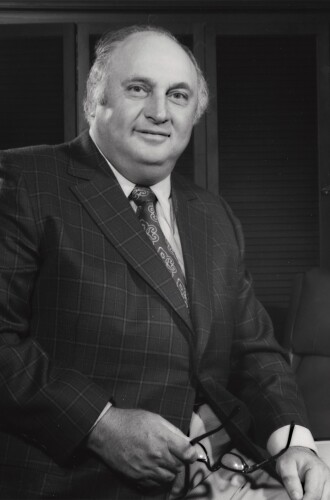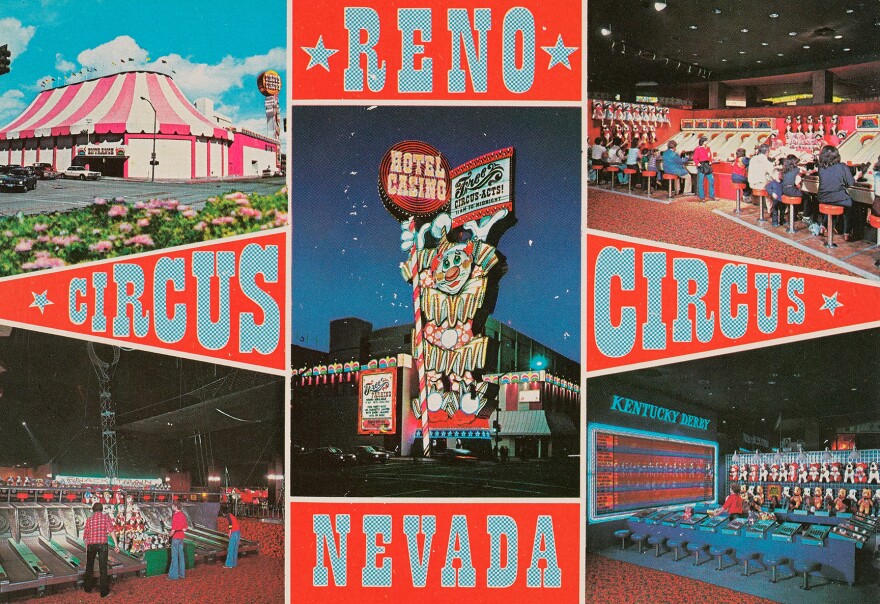2024 marked a pair of anniversaries. It will be 50 years since the creation of Circus Circus Enterprises and the new regime that made that hotel-casino into what it is. And it will be 25 years since the hotel opened, which led to a new name for the company: Mandalay Resorts.

Circus Circus was built in 1968 and originally opened in October under the command of Jay Sarno, Stan Mallin, and their partners. Sarno got most of the attention. He had always wanted to join the circus, so he decided to build one, aimed only at adults. Since the same people had built Caesars Palace, it’s no surprise that they came up with something themed and over the top … an all-you-can-eat dessert bar called The Diet Buster, a baby elephant, and acrobats performing directly above the gambling tables. It lacked one thing: a hotel. When Sarno and company got a Teamsters pension fund loan to build a fifteen-story tower, there was a catch: the gift shop concession would go to a new resident named Anthony Spilotro. He moved on to other things before long.
Eventually, Sarno and his investors also moved on. They faced investigations about organized crime ties and tax issues. The property still wasn’t a real moneymaker. In 1974, they leased the property, remaining as landlords. The new operators were William Bennett and
William Pennington. Pennington had been in the oil business before becoming involved in designing gambling devices. Bennett had been in the furniture business in Phoenix, where Del Webb was headquartered. He joined Webb’s company and helped manage various resort properties. Bennett and Pennington took over operating the Circus Circus.
The changes began quickly. The adult-oriented carnival and arcade now catered to children. The showroom became a buffet. Slot machines increased in number. An RV park was installed. Bennett brought in Mel Larson, who marketed the Circus Circus everywhere, especially up and down highways. Success bred success, and the property kept expanding, adding hotel rooms.
So did the company. Circus Circus Enterprises went public. They opened a sister property in Reno, expanded into Laughlin, and added the Silver City and Slots-a-Fun on the Strip. In 1990, they opened the Excalibur, followed in 1993 by the Luxor. That year, Circus Circus Enterprises teamed with the Caranos and Reno’s Eldorado property to open the Silver Legacy. They bought out Gold Strike Resorts, which had casinos in Jean and Railroad Pass near Boulder City. The company partnered with Steve Wynn’s Mirage Resorts in 1996 to open the Monte Carlo, now Park MGM. In 1999, Mandalay Bay opened, and the corporate name changed to Mandalay Resort Group.

In 2005, MGM Mirage acquired Mandalay Resorts for $7.9 billion. That was the end of what was originally Circus Circus Enterprises, and MGM eventually sold the Circus Circus to Phil Ruffin. But the company’s influence is all around us, and not just on the Strip. The Sarno and Mallin families remain active in the community. Bennett’s daughter Diana followed in her father’s footsteps as a philanthropist. One of the company’s longtime top executives, Glenn Schaeffer, made major contributions to UNLV’s creative writing program and what eventually became the Black Mountain Institute. The list is long, and well beyond gaming. And the original idea behind Circus Circus was to have a themed casino, much like Caesars Palace. Talk about impact!








